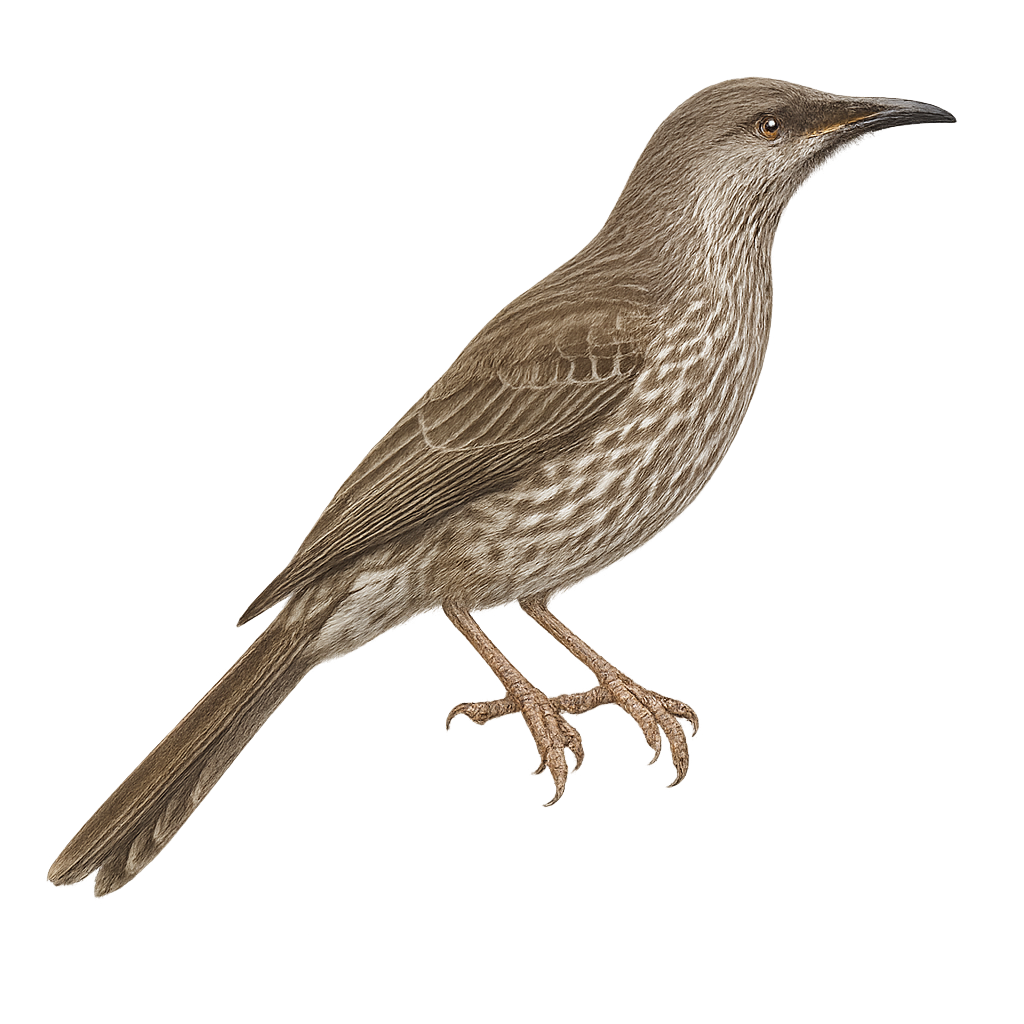Your wildlife photography guide.
Explore the western wattlebird in detail, study its behavior, prepare your shots.
Where to observe and photograph the western wattlebird in the wild
Learn where and when to spot the western wattlebird in the wild, how to identify the species based on distinctive features, and what natural environments it inhabits. The WildlifePhotographer app offers tailored photography tips that reflect the western wattlebird’s behavior, helping you capture better wildlife images. Explore the full species profile for key information including description, habitat, active periods, and approach techniques.
Western Wattlebird
Scientific name: Anthochaera lunulata

IUCN Status: Least Concern
Family: MELIPHAGIDAE
Group: Birds
Sensitivity to human approach: Tolerant
Minimum approach distance: 10 m
Courtship display: August to October
Incubation: 14-16 jours
Hatchings: August to November
Habitat:
Open forests, wooded regions, shrublands
Activity period :
Primarily active during the day, with peak activity in the morning and late afternoon.
Identification and description:
The Western Wattlebird, or Anthochaera lunulata, is a bird endemic to Australia, primarily found in wooded regions and open forests. It is distinguished by its brown-grey plumage with white crescent-shaped markings on the chest, hence its name. This bird is known for its loud and varied song, often heard before being seen. It primarily feeds on nectar but also consumes insects and fruits. The Western Wattlebird is a sociable bird, often observed in small groups. It plays a crucial role in pollinating local plants. Although generally tolerant of humans, it can become territorial during the breeding season.
Recommended lens:
400 mm – adjust based on distance, desired framing (portrait or habitat), and approach conditions.
Photography tips:
To photograph the Western Wattlebird, choose sunny mornings when natural light highlights the details of its plumage. Use a 400mm or longer telephoto lens to capture sharp images from a distance, as this bird can be territorial. Be patient and discreet, blending into the environment to avoid disturbing it. Observe its feeding habits near nectar-rich flowers for dynamic shots. A tripod can be helpful to stabilize your camera during extended shooting sessions.
The WildlifePhotographer App is coming soon!
Be the first to explore the best nature spots, track rutting seasons, log your observations, and observe more wildlife.
Already 1 439 wildlife lovers subscribed worldwide

